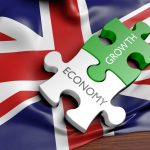Having a bank account may be the norm within many cultures, with many having an account set up in their name practically from birth.
However, approximately a quarter of the global population (1.7 billion adults) do not have or have ever owned a bank account, based on figures by the most recent research from the World Bank Group.
Predictably, the results show that a large amount of the unbanked population originates in countries such as Nigeria, Bangladesh, China, India, Pakistan and Mexico; the developing part of the world. But perhaps unexpectedly, one of the main factors for a significant number of unbanked people in these regions is not always their income level.
Below James Booth, VP, Head of Payment Partnerships EMEA at PPRO, explains further for Finance Monthly.
About half of unbanked adults come from the poorest 40% of households within their economy. Minimal education and high unemployment is only a fraction of the explanation. Account costs regarding set-up and maintenance, as well as the lack of physical accessibility to banks, are major obstacles in many communities.
In Europe, countries like Denmark, Finland, Netherlands, Norway and Sweden have a 100% banked population. But, like any aspect of culture, the population of banked consumers can differ significantly from country to country. Take the Czech Republic, for example, with an 81% banked population and Hungary at 75%.
How is shopping online possible without a bank account?
In 2020, commerce is customer-centric. At a time when any device can become a point of sale, consumers expect a seamless, integrated shopping experience. The shopping habits of consumers – including the unbanked ones – must be taken into account when optimising their experience. A big part of that experience is the way people prefer to pay for their purchase. For example, the number of contactless payments made in the UK surged by 31% in a year to reach 7.4bn in 2018, meaning that the UK remains one of the highest users of debit and credit-based payment methods. However, this is not the case for the rest of the world.
Bank transfers, e-wallets, cash-based payments, and other local payment methods have previously been called alternative payment methods. But they are no longer the alternative; they are the norm for most of the world. According to a Worldpay report, 75% of all e-commerce purchases will be paid for via local payment methods by 2021.
Bank transfers, e-wallets, cash-based payments, and other local payment methods have previously been called alternative payment methods. But they are no longer the alternative; they are the norm for most of the world.
Oxxo, for example, is a cash-based payment method widely used in Mexico to purchase goods online. The shopper gets a transaction voucher from the merchant and then goes to an Oxxo convenience store with their voucher to pay the balance in cash. Then the merchant releases the goods for delivery. Cash-based payment methods are a low-tech solution for the unbanked who shop online. At the opposite end of the spectrum are high-tech payment methods, which continue to grow in popularity alongside increasing rates of internet and smartphone penetration.
57% (4.388 billion) of the world now has access to the internet and a further 67% (5.112 billion) have access to mobile devices, up 100 million (2%) in the past year, according to the latest Global Digital 2019 reports. In Africa alone, there are 444 million mobile users, which enables people, even in the most remote locations, to shop online via e-wallets. These e-wallets are linked to the user’s mobile phone account, which they can top up with cash and use to buy goods and services online.
[ymal]
A growing customer base
Tapping into a new market isn’t the most straightforward task. Nevertheless, it is one that needs to be faced head-on by any business that wants to prosper and grow. Building a positive, smooth experience for customers can be complex, but there is a solution. Third-party payment experts and aggregators can deliver regional knowledge and financial and technical connections on an international scale, partnering with merchants (or their payment service providers) for an easier path to expansion.
The reality of the global population becoming fully banked is still some way off, and we can expect the payments market to become increasingly fragmented. Unbanked adults may still be a relatively small minority, but the gap between the banked and unbanked population is widening. And businesses that adapt to this market have a substantial advantage over those that don’t.










